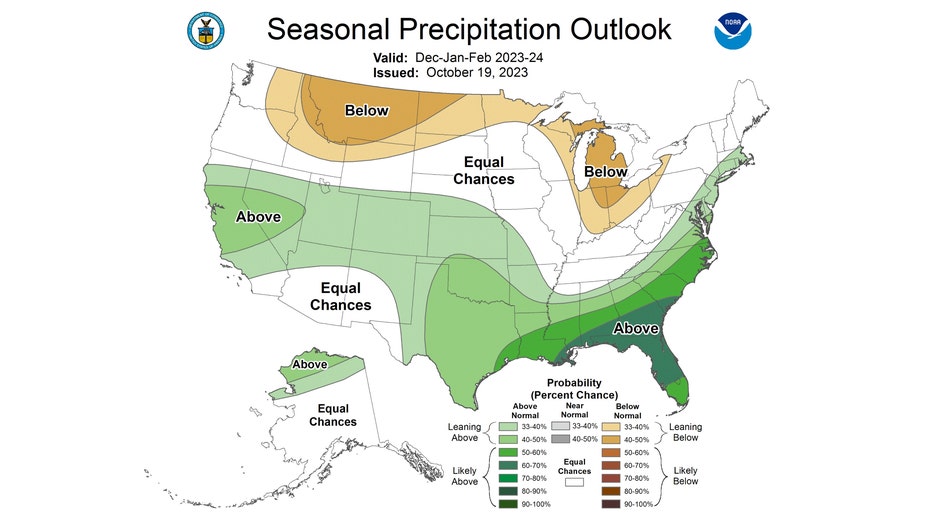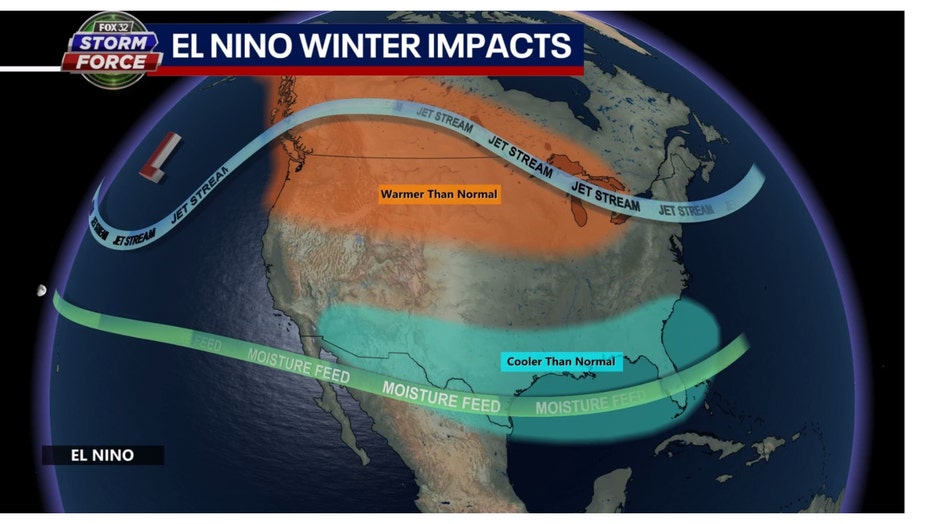What impact will an El Niño have on Chicago's winter?

What impact will an El Ni?o have on Chicago's winter?
We all know it will snow this winter. The question really is, 'How much snow will we get?'
Chicago - To snow, or not to snow? That isn't the question.
We all know it will snow this winter. The question really is, "How much snow will we get?"
The average annual seasonal snowfall for Chicago is 38.4". That includes snowfall not only during the winter months (December-February) but also in September, October, November, March and April.

What will this winter bring?
I looked back at the past 20 winters to see if there was a climatological clue we could garner from the data. Nine of the past 20 winters have seen above-average snowfall.
Not very helpful.
Just over half of the previous 20 winters have seen less snowfall than average and just under half have seen more than average snowfall.
What is more interesting is that the average snowfall for those 20 winters was 40.65" or 2.25" above average.

NOAA just released updated seasonal temperature and precipitation outlooks. The outlooks aren't good news for those who like their winters cold and full of snow.
In terms of temperature, the outlook for the winter period from December through February has us "leaning above average" overall.
Notice the lack of blue on this map.

There isn't any portion of our country favored for below-average temperatures this winter.
The seasonal precipitation outlook paints a wet picture for the south with relatively drier conditions expected in the north. Chicago is "leaning below" normal for precipitation this winter. The precipitation we see from December through February can be either rain, snow or something in between.

There are many factors that influence winter forecasts but the presence or absence of an El Niño is one of the most important considered. The chart above is from The International Research Institute for Climate and Society. It shows the majority of models favor a strong El Niño this upcoming winter.
Both of NOAA's outlooks align with similar conditions we see during an El Niño winter. Warmer and drier conditions are usually found in the northern part of our country and a wetter pattern is favored for our southern states.

El Nino impacts on winter temperatures
El Niño's tend to make Midwest winters warmer than normal. A stronger than usual southern branch of the jet stream tends to bring more clouds and precipitation to southern states and that pattern keeps them cooler than average overall.

El Nino impacts on winter precipitation
An El Niño's impact on precipitation isn't quite as clear. El Niño influenced winters tend to trend drier than normal for Chicago. That precipitation can come in the form of rain or snow.
This year's winter temperature outlook from NOAA hints at a warmer-than-average winter which could mean more rainfall and less snow than we would see in a typical winter.
This winter forecast will be tweaked by the National Weather Service and I will issue my own "official" winter forecast in a few weeks.
I'm not sure the general tone of this forecast will change much.
NOAA's forecast of less-than-average snowfall and above-average temperatures is not good news for those who like their winters more on the brutal side.

